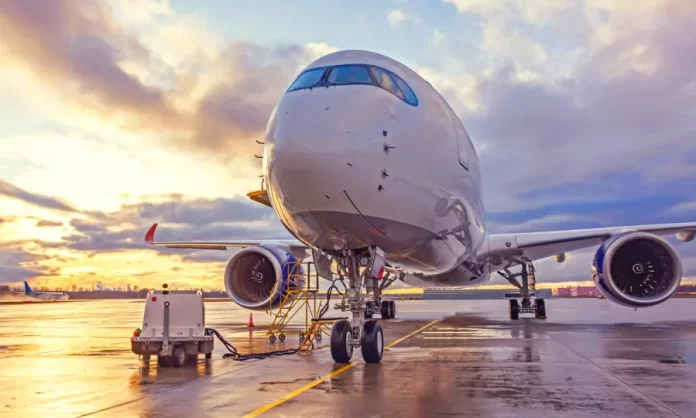
Aviation fuels are essential to the operation of the global air travel industry, powering millions of flights each year and driving international commerce and tourism. Among these fuels, Jet A-1 stands as the cornerstone of aviation, particularly for commercial airlines and cargo planes. As the industry navigates a post-pandemic world with a heightened focus on sustainability and cost efficiency, understanding the role and future of Jet A-1 fuel is more important than ever for businesses and investors alike.
What is Jet A-1 Fuel?
Jet A-1 is a type of kerosene-based aviation fuel, meticulously refined to meet the stringent safety and performance requirements of modern aircraft engines. It is known for its low freezing point, typically around -47°C, making it ideal for the high-altitude, cold-weather conditions encountered by commercial jets. This feature, along with its high energy density, enables aircraft to operate efficiently across vast distances.
Jet A-1 is used in both jet engines and turboprops, making it the predominant fuel for the majority of commercial airlines worldwide. Its formulation includes a mix of hydrocarbons, additives, and anti-icing agents to ensure reliability and performance under varying conditions. Compared to other types of aviation fuels, such as Jet B or military-specific variants, Jet A-1 offers a balanced combination of performance, safety, and availability, making it the go-to choice for the global aviation sector.
The Business Case for Jet A-1 Fuel
From a business perspective, Jet A-1 fuel represents a significant portion of an airline’s operational costs, typically ranging between 20% to 30%. This volatility in fuel costs can heavily impact profitability, making fuel management and procurement strategies a critical aspect of airline operations. With oil prices fluctuating due to geopolitical events, supply chain disruptions, and shifts in global demand, airlines are continuously seeking ways to hedge against fuel price risks.
However, the widespread use of Jet A-1 fuel is not without challenges. As the aviation industry faces increasing pressure to reduce carbon emissions, Jet A-1, derived from fossil fuels, is a target for criticism and regulatory scrutiny. Airlines and fuel suppliers are thus investing in research and development to find more sustainable alternatives, such as Sustainable Aviation Fuels (SAFs), which are designed to blend seamlessly with Jet A-1 while offering a lower carbon footprint.
The Push for Sustainability
The aviation industry is committed to reducing its environmental impact, with targets set by bodies like the International Air Transport Association (IATA) to achieve net-zero carbon emissions by 2050. This ambitious goal necessitates a significant reduction in the reliance on traditional fossil-based fuels like Jet A-1. Currently, SAFs represent the most viable path forward, as they can reduce lifecycle carbon emissions by up to 80% compared to conventional jet fuel.
SAFs are produced from a variety of feedstocks, including used cooking oils, agricultural residues, and even municipal waste. They are designed to be “drop-in” fuels, meaning they can be blended with Jet A-1 and used in existing aircraft engines without modifications. While SAFs currently account for a small fraction of total aviation fuel consumption, their production and adoption are expected to grow as technology advances and costs decrease.
Airlines are also exploring other innovative approaches, such as electric and hydrogen-powered aircraft. However, these technologies are still in the early stages of development and are unlikely to replace conventional jet fuel for long-haul flights in the near term. As a result, Jet A-1, blended with SAFs, will continue to play a critical role in the aviation sector’s sustainability journey for the foreseeable future.
Navigating Future Challenges
As the industry evolves, businesses involved in aviation fuel production, distribution, and logistics face a rapidly changing landscape. Investments in infrastructure to support SAFs, along with innovations in fuel efficiency and carbon offsetting, will be crucial for maintaining competitiveness. Additionally, regulatory changes, such as the European Union’s “Fit for 55” package, which aims to reduce greenhouse gas emissions by 55% by 2030, are likely to drive further changes in fuel standards and usage patterns.
For investors and stakeholders, understanding these dynamics is key to identifying opportunities and risks in the aviation fuel market. Companies that lead in sustainable fuel innovation, optimise supply chains, and adapt to regulatory shifts will be well-positioned to thrive in the changing aviation landscape.
Jet A-1 fuel remains a cornerstone of the aviation industry, providing the energy needed to power flights across the globe. While the push towards sustainability presents challenges, it also opens new avenues for innovation and growth. As airlines and fuel suppliers navigate this transition, the ability to balance performance, cost, and environmental impact will define the next era of aviation fuel. For businesses and investors, staying ahead of these trends will be crucial in capitalising on the evolving dynamics of the global aviation market.












